#that said Fox is even more determined to establish contact and he's becoming more organized in his efforts
Explore tagged Tumblr posts
Text
Superhero AU - The Jedi
Back to the superhero AU because I left it on such a hopelessly sad cliffhanger. This time, we get to see what the Jedi have been up to this whole time, and what their general plan of attack is.
Previous Posts: [X] [X] [X] —
It doesn't take long for the Jedi to realize something big is going on. They're not entirely sure what it is exactly (as much as people like to say so they are not, in fact, mind readers), but they do know it involves some rather strange disturbances as well as a very bizarre missing person's case that involves hundreds of individuals from all walks of life.
Usually they wouldn't immediately jump to the conclusion that both of these things are connected (their city is certainly a box of chocolates in terms of odd coincidences) but, seeing as this was brought to Obi-wan's attention from a fairly reliable source, it's safe to say they do start off an investigation with fair certainty that whatever caused the odd fluctuations of power in the city (the orbs had a very distinct force signature behind them) has to do with both the missing people's case, and the major incident that got swept under the rug before they could get to the scene of chaos (Palpatine's men were FAST).
The Jedi who are most involved with the investigation are Obi-wan who has all kinds of connections that give him an advantage (one of them being ex-mobster Dexter Jettster, who's sister-in-law is in hospital and her twin sons both vanished, so he has stakes in this as well), Jedi Shadow and Spymaster-in-Training Quinlan Vos (who's using the criminal underworld to try to figure out who are the shady people that the eyewitnesses saw taking their loved ones away), Mace Windu who is keeping tabs on the military's abnormal activities (he's noticed a pattern of sudden announcements, gatherings, recruitment campaigns and what not, and he's trying to figure out if it has anything to do with current goings on) and Jocasta Nu (who is coordinating the whole investigation since she has access to a lot of information and resources).
Everyone else is either keeping up with their usual daily lives (to not draw too much attention to the fact the Jedi are finding all of this extremely suspicious), or occasionally scouting the city for any signs of trouble (Anakin and Ahsoka like to nose around despite needing to focus on their studies). Either way, if something odd happens, the Jedi will know...
And something odd DOES happen.
A very extensive "family" of identical young men have recently moved into the city, enrolled in high school, uni, gotten jobs, are doing volunteer work, etc... And all of them seem incredibly friendly towards the Jedi. Unusually so. It raises a lot of red flags. Especially when there's also a sudden boost in crime and a group of new "heroes" is going about fighting said crime.
Obi-wan is convinced they've found their missing people. The question is, what is going on with them?
The Jedi can sense how forced the friendliness is. How they very clearly want to be anywhere but where they currently are. But at the same time they can sense the fear behind their actions, as well as the feeling of defeat and resignation practically rolling off of them in waves. Whatever it is that's gotten them in such a bind is clearly not something they can easily fix...
For now all they can do is play along and try to figure out a way to help these people. Before whatever it is that's slowly building up becomes an actual problem. Maybe if they make themselves available to them, show they want to help, these people might open up to them and share their plight?
Only one way to find out!
#star wars#the clone wars#Superhero AU#the Jedi see these very stressed people trying to act friendly and unassuming#and immediately put two and two together#they're not gonna push too hard tho they can see they're in trouble and need help#so the Jedi are opening up to them in the hopes they will gain the troopers's trust#if just so they can know what's wrong so they can help them#in the end it just makes everyone invested in caring for each other#and worsens the overall sense of guilt#that said Fox is even more determined to establish contact and he's becoming more organized in his efforts
6 notes
·
View notes
Text
The Rise and Fall of The Rochester Rappers
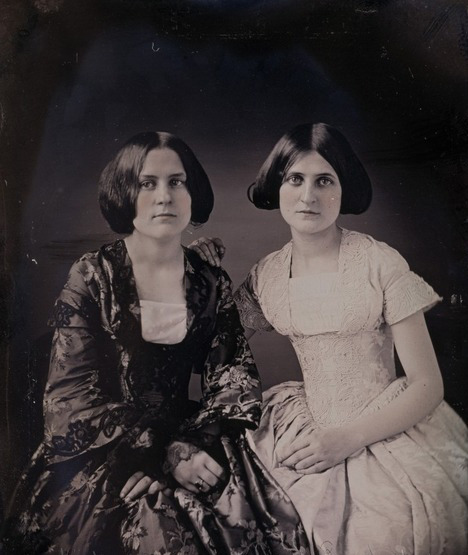
Maggie and Kate Fox; Source: American Hauntings
Spirtualism, the idea of communication with spirits of the dead, has been part of human consciousness for ages. Tales of seances, Ouija boards and spirit mediums continue to be part of pop culture in fiction, film, reality TV and social media. Spiritualism's popularity rose significantly during the 19th century as society began to change. Believe it or not, two young sisters who heard strange noises in their house at night played a significant part in spiritualism's growth.
It all started with two young girls in a small farmhouse in Hydesville, N.Y., who claimed to hear thumping or "rapping" noises in their bedroom at night. Margaretta "Maggie" Fox, age 14, and her 11-year-old sister, Kate, convinced their mother, Margaret, that their house was haunted. Maggie and Kate demonstrated how "Mr. Split-foot," as they called the spirit, could respond to questions with specific numbers of raps. Their mother asked questions such as how many children she had and how many are surviving. The spirit responded with the correct amount of raps. However, their father, John, was sceptical.
Mrs. Fox wanted to know who the spirit was and her daughters told her that he was a man who died at 31-years-old and was married with five children. Their mother decided to show a neighbor and even asked the spirit permission beforehand. The spirit consented.
It was late on March 31,1848 that the girls shared their experience with a neighbor, Mrs. Redfield. Curious and most likely sceptical, Mrs. Redfield came to the Fox home to see for herself. Mrs. Fox led the "seance" for Mrs. Redfield, commanding the spirit to knock specific numbers of times. The accurate amount of raps sounded in response each time. Their neighbor was convinced and spread the word.
The night after Mrs. Redfield's reading, a large group of neighbors came to the Fox home. One of the men devised a code for the spirit to spell out messages, with specific numbers of raps corresponding to a letter of the alphabet. The spirit said he was a peddler who had been murdered and that his remains were buried in the Foxes' basement. The Fox farmhouse was located near a creek. A storm caused the basement to flood, forcing further investigation to be postponed.
Not all of the Foxes' neighbors were amused by Maggie and Kate's supposed talents. John and Margaret Fox were asked to leave the congregation at the Methodist Episcopal Church because of the "unholy" activities of their daughters.
A pamphlet was published in 1848, "A Report of the Mysterious Noises Heard in the House of John D. Fox in Hydesville, Arcadia, Wayne County," consisting of information compiled through interviews with neighbors, former residents of the Foxes' house and John and Margaret Fox. The interviews were conducted by E.E. Lewis, an attorney from Canandaigua, N.Y., near Hydesville.
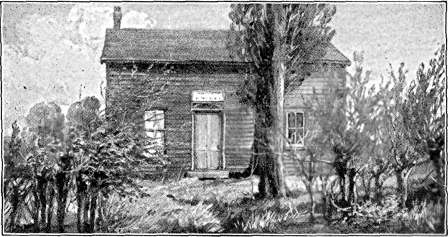
The Foxes' home in Hydesville, N.Y.; Source: Smithsonian Magazine from Hudson Valley Halloween Magazine
Leah Fox Fish, Maggie and Kate's older sister, happened to read Lewis' booklet. At age 33, Fish was much older than her sisters, divorced and a mother. After finding out about the supposed haunting in her family's home, Fish traveled from her home in Rochester, N.Y., about 20 miles from Hydesville.
Fish was already familiar with spiritualism, having read Andrew Jackson Davis' "The Divine Principles of Nature." Davis was inspired by an 18th century mystic, theologian and scientist, Emanuel Swedenborg, who described a multi-dimensional spirit world human beings enter when they die. Davis was referred to as the"John the Baptist of Modern Spiritualism" and claimed that Swedenborg's spirit communicated with him. Davis believed that the living were in contact with the dead but unable to communicate. He predicted that the lines of communication between the living and the dead would eventually open and make communication possible.
By the time the Fox family introduced their "rapping spirit," the ideas of another 18th century figure were known in the U.S. Franz Anton Mesmer was a self-proclaimed "healer" who said that human bodily functions were controlled by a "magnetic fluid." By putting people under hypnosis, Mesmer claimed that he could manipulate this magnetic fluid and correct any imbalances which cause illness. Mesmerists began operating in the U.S. Some people who were put under hypnosis said that they had seen spirits.
American society was changing with the industrial revolution, urbanization and inlux of immigrants from various cultures. Populations in cities were expanding, leading to unsanitary conditions, causing outbreaks of cholera, whooping cough, influenza and diptheria.The death rate due to disease and lack of proper medical care increased along with the population. In addition to adults, many children died in infancy. Communication with dead loved ones became a comforting thought.
Ideas about religion began to change. The fire and brimstone of old time religion gave way to a desire to help those in need. Philanthropy replaced stern piety. Many charities and organizations were established to help the needy.
Spiritualism's popularity grew in this atmosphere of questioning of conventional religion plus the increasing death rate.
Leah Fox Fish brought her younger sisters back to Rochester. Fish wanted her sisters to continue to conduct the seances at her home. Maggie and Kate's first seance in Rochester was with friends of Fish, a Quaker couple, Isaac and Amy Post. At first the Posts were sceptical but open-minded enough to come for a session with the sisters. The Posts had become disenchanted with their religion. The couple were involved in many causes including the underground railroad. They left their church because they thought the congregation was intolerant.
Initially sceptical, the Fox sisters gave a reading accurate enough to make them believers. The Posts spread the word about the girls' abilities.
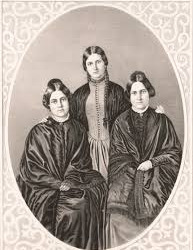
From left: Maggie, Kate & Leah Fox; Source: Wikipedia
While interest in the Fox sisters grew, not everyone was a fan. Of course there were sceptics but others thought that the seances were blasphemous. However, the sisters were contacted by an overwhelming number of requests for seances. Fish hosted the seances and usually one of the sisters acted as medium.
Maggie refused to participate for a short period. She eventually got over her melancholy and rejoined her sisters. Maggie may have changed her mind because of her sisters' financial situation. Fish was a divorced woman living at poverty level. Resuming the seances was the only way of improving their finances.
Claiming that the spirits demanded that the sisters go public and take their abilities to the community, Fish set up a seance at Rochester's largest venue, Corinthian Hall. The date was Wednesday, November 14, 1849, with the seance set to begin at 7 p.m. and admission was 25 cents. The show wasn't well-received. While the spirit did perform and raps sounded in the auditorium, there were many sceptics in the community who wanted answers.
Committees were formed to "test" the sisters in an attempt to uncover a hoax. The sisters were placed on pillows, glass and even had their underwear inspected by women of the community. In the end, it was determined that there was no hoax. A source for the rapping noises wasn't found.
On November 17, the community gathered at Corinthian Hall to hear the committees' findings. When it was announced that a hoax wasn't discovered, the audience went ballistic. Pandemonium erupted when some members of the audience set off firecrackers. People were screaming and yelling, insisting that the sisters had some object hidden on them to produce the noises. The audience tried to rush the stage. The Fox sisters and other spiritualists had to be escorted from auditorium by police.
The Fox sisters did indeed receive publicity - mostly negative. The local press in Rochester claimed that sceptics and their questions weren't welcome at the seances. One writer questioned the spirit's behavior, describing it as silly and childlike.
As that old expression goes, there's no such thing as bad publicity. Despite all the anger and negativity surrounding the Fox sisters, they reached celebrity status. The girls' decided to hit the road, taking their show to Troy and Albany, arriving in New York City in June of 1850.
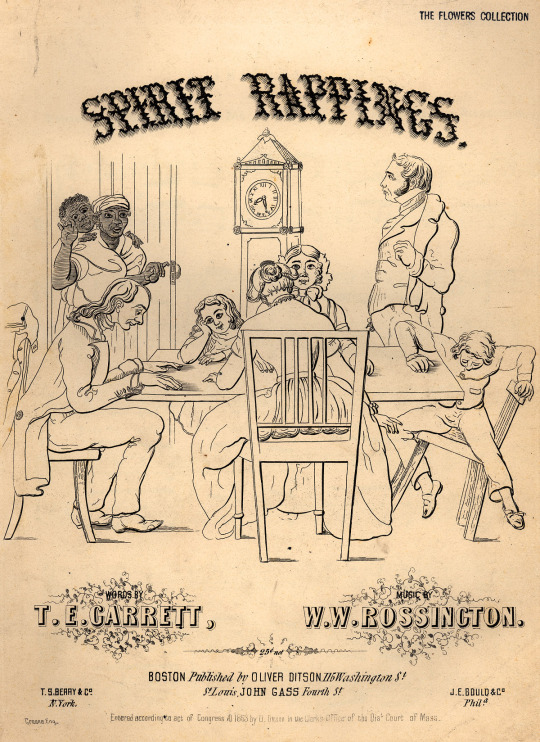
Source: Wikipedia
In a matter of two weeks the sisters attracted the attention of many highly-respected writers and editors. Their most immpressive session included receiving communication from the deceased sister of author James Fenimore Cooper. The reading included details about Cooper's sister's death while horseback riding. Cooper became a believer along with many others.
The Fox sisters became known as the "Rochester Rappers." A song was sung about them on Broadway and merchandise was sold with their image on them. People from all across the U.S. claimed to have psychic abilities. Spiritualist publications began circulating: Spirit World, Spiritual Philosopher, New Era and The Spiritualist Messenger.
Many other spiritualists gained large followings: Edgar Allan Poe's ex-fiancee Sarah Helen Whitman and levitating medium Daniel Douglas Home, both in Connecticut; teen medium Cora Scott of Buffalo, N Y. and a Boston woman known as "Mrs. Sisson," a clairvoyant physician. A farmer from Ohio, Jonathan Koons, claimed that spirits provided the instructions for him to build a spirit room. Two other men from Ohio, George Walcutt and George Rogers painted portraits who relatives recognized were deceased family members who neither of the Georges had ever met.
Along with the spread of spiritualism came more varied methods of spirit communication, including table tipping, spirit music and dancing lights. Spiritualism also attracted many critics including transcendentalist Ralph Waldo Emerson, who dismissed the spirits' raps and taps as "rat revelations."
Spiritualism was debated in the press as well as in the U.S. Congress. More spiritualists appeared on the scene and added table tipping and levitation as part of their repertoire. Maggie and Kate Fox were being slowly pushed out of the spotlight. All was not well with the sisters who had begun to fight with each other and with their supporters.
There were many claims that the Fox sisters were making the rapping noises themselves by cracking their toes, knees and ankles, mechanical devices and ventriloquism. During one seance, the spirit of Benjamin Franklin supposedly came through. A spectator observed that Franklin's spirit surprisingly had no command of grammar. Maggie is described as removing herself angrily from the table, saying that she never understood grammar. However, no fraud was uncovered after the girls had been tested many times.
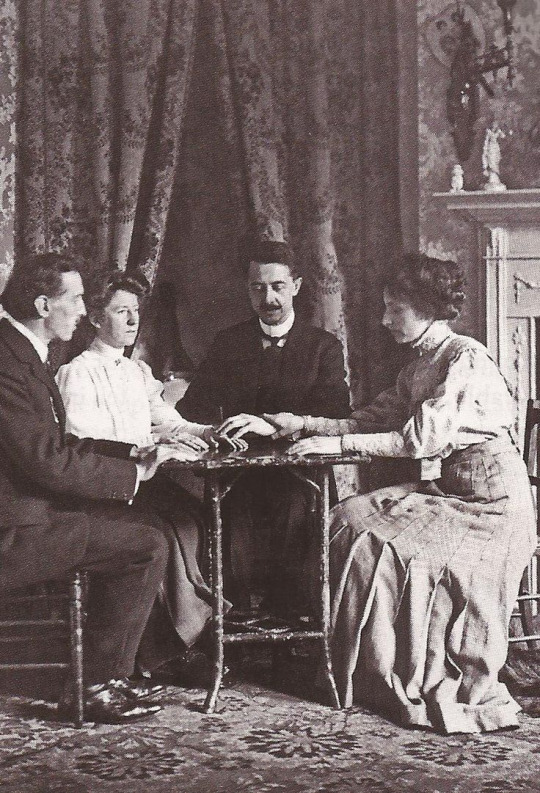
Source: How It Works Magazine
Maggie Fox quit mediumship for Elisha Kent Kane, an Artic explorer from an aristocratic background. The couple met with disapproval from Kane's family. Fox and Kane did have a ceremony with their friends in attendance but were never legally married. Maggie returned to mediumship after Kane's death in 1857. Broke and in mourning, she began to drink heavily.
Kate also began a downward spiral into alcoholism. Her excessive drinking affected her readings but nevertheless, she was still in demand as a medium. She went to England and performed for spiritualists in 1871. Kate also experienced more luck with marriage than Maggie. The following year, still in England, she married barrister Henry Jencken. The couple had two sons. Kate's eldest son, Ferdinand, supposedly demonstrated mediumistic abilities by age 3. However, Kate's luck would run out.
Around 1885, spiritualism's popularity was declining. Society was starting to question and "crack-down" on fraudulent psychics and mediums. A commission in New York called Maggie Fox to appear for a test of her abilities - she failed. Kate came back to New York in 1888 after her husband died from a stroke. Her children were taken away by welfare workers after Kate was arrested for drunkenness and idleness. Maggie did intervene to help her sister, getting Kate's sons' uncle in England to take custody.
Maggie had begun to contemplate suicide but instead made the decision to publicly debunk spiritualism. She managed to book an appearance at the New York Academy of Music in 1888.
Before her appearance, Maggie gave an interview to the New York World, who paid her $1,500. Maggie vented her anger at spiritualists as well as her sister Leah, who had publicly disparaged Kate because of her alcoholism and losing custody of her children. Kate was going to attend Maggie's confession.
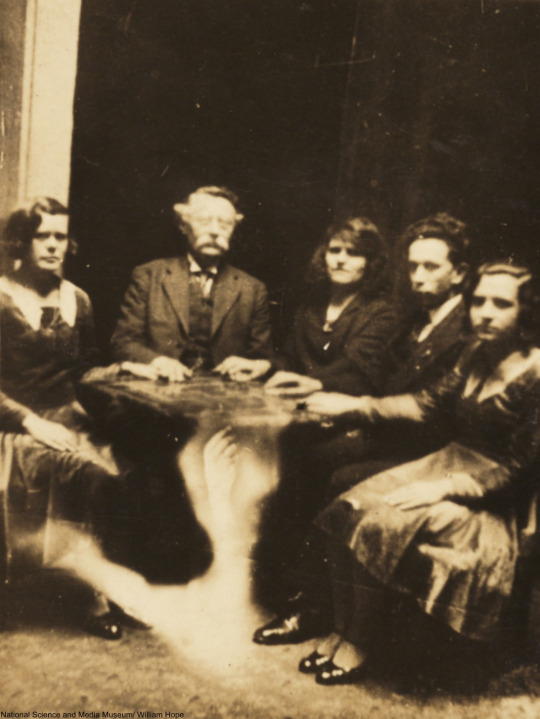
Source: Dusty Old Thing
Maggie took the stage and told the audience:
“My sister Katie and myself were very young children when this horrible deception began. At night when we went to bed, we used to tie an apple on a string and move the string up and down, causing the apple to bump on the floor, or we would drop the apple on the floor, making a strange noise every time it would rebound.”
Maggie went on to say that her and Kate began to make the rapping noises by cracking their toes, knuckles and joints. “A great many people when they hear the rapping imagine at once that the spirits are touching them. It is a very common delusion. Some very wealthy people came to see me some years ago when I lived in Forty-second Street and I did some rappings for them. I made the spirit rap on the chair and one of the ladies cried out: ‘I feel the spirit tapping me on the shoulder.’ Of course that was pure imagination.”
She also said that her sister Leah knew that her and Kate made the rapping noises. Maggie said that Leah used her and Kate to make money. She then took off her right shoe, propped up her bare foot on a stool and proceeded to make short raps.
Maggie wrote in her 1888 memoir, "The Death Blow to Spiritualism," that her and her sister, Kate, continued their story out of fear of punishment by their parents and being ostracized by neighbors.
Spiritualists claimed that since Maggie couldn't profit from mediumship, she looked to profit from debunking it. Maggie also went incognito to a debate at the Manhattan Liberal Club. Under the name Mrs. Spencer, Maggie divulged all of the tricks that mediums supposedly use such as writing messages on slates with their teeth or feet. Spiritualists would be further outraged one year after Maggie's confession when she claimed her spirit guides prompted her to recant her confession.
Maggie remained estranged from Leah until Leah's death in 1890. Leah Fox Fish had married a second time to a wealthy businessman and wanted nothing to do with Kate or Maggie. Kate succumbed to alcoholism in 1892. Maggie passed away in 1893, destitute and living in a friend's home in Brooklyn. Oddly enough, the year that Maggie died also marks the establishment of the National Spiritualist Association, now known as the National Spiritualist Association of Churches.
Despite Maggie Fox's confession, spiritualism continues today. Countless mediums have written books, hosted TV shows and have a presence on social media. Many reality TV shows about paranormal investigation have also popped up on TV, especially in recent years. The belief in life after death has existed since time immemorial. As always, the debate continues - is life after death reality, delusion or just showbiz?
- Missy Dawn
Sources:
"The Fox Sisters and the Rap on Spiritualism," by Karen Abbott, Smithsonian Magazine, October 30, 2012.
"The Fox Sisters: The Rise and Fall of Spiritualism's Founders," American Hauntings Ink, The Haunted Museum
The Fox Sisters: Spiritualism’s Unlikely Founders," by Nancy Rubin Stuart, American History Magazine, August 2005.
#paranormal#spirtualism#ghost and spirits#spirit communication#the fox sisters#psychics#spirit medium#seance#19th century#history
14 notes
·
View notes
Text
States seek explicit patient consent for pelvic exams
Savanah Harshbarger estimates she performed as many as 10 pelvic exams last year on patients before gynecologic surgeries, feeling for fibroid tumors or other abnormalities.
The Duke University medical student said the experience was a revelation.
“It’s pretty empowering to know this is something you can detect with a gloved hand instead of needing an MRI or some more expensive procedure,” Harshbarger said.
What was not always clear to her was whether the patients had agreed ahead of time to have a student do the exam while they were under anesthesia. The consent form, Harshbarger said, “definitely does not mention any specific things a student might be doing. It’s fairly vague language.”
Lawmakers in a number of states now want to eliminate any question about patient consent.
Bills introduced in roughly a dozen states this year would require that women undergoing gynecological surgeries give explicit approval to a pelvic exam beforehand. It’s a step that some medical experts say is an unnecessary intrusion into patient care.
Utah’s governor signed a pelvic exam consent bill into law earlier this year. A bill in New York passed the state Senate this week and is headed to the governor, and the Maryland Legislature unanimously sent legislation to Gov. Larry Hogan, who is expected to sign it.
Maryland state Delegate Heather Bagnall said the state’s teaching hospitals have informed consent as a best practice, but she felt it needed to be made explicit in state law to protect women undergoing surgery and as an assurance for medical students.
“So we have basically just spelled out in no uncertain terms, if a patient is going under anesthesia, if a patient is unconscious, that they have to have given consent for these exams,” Bagnall said. “They need this added level of protection, and they need this added level of peace of mind.”
During a committee hearing on the bill, Melanie Bell, a board member for the Maryland Nurses Association, said there have been times when patients have awakened during the procedures and felt violated.
“Clinical experiences are necessary and are important, and we must learn in a hands-on environment when we’re students,” she said. “However, we must treat patients with dignity and respect.”
A pelvic exam is standard practice before gynecologic surgeries to determine the position and mobility of the organs. It involves inserting fingers of a gloved hand in the patient’s vagina to feel her uterus and ovaries. Medical students sometimes do the exams as part of their training.
What’s not clear is how often patients are clearly told of student involvement ahead of time.
In general, the bills introduced this year would require explicit informed consent before a medical student is allowed to perform a pelvic exam on an anesthetized patient. Some would require the exam to be related to the planned procedure.
Not everyone believes the legislation is necessary.
Yale Medical School asked Connecticut lawmakers to rely on medical societies to set clear standards designating when it’s medically appropriate or necessary to conduct a pelvic exam on an anesthetized patient. The school cautioned lawmakers against legislating clinical decision-making and helped persuade them to shelve the bill.
In New Hampshire, the House killed legislation after its health committee said it heard extensive testimony and found that the practice of informed consent is already in place.
Even in Utah, which this year became the seventh state with a pelvic exam consent requirement, some in the medical community said the legislation wasn’t needed.
The Utah law requires a separate consent form that includes the words “CONSENT FOR EXAMINATION OF PELVIC REGION” in no smaller than 18-point type. It defines a patient examination as a “medical examination that requires contact with the patient’s sexual organs.”
At the state’s largest teaching hospital, the new paperwork won’t change the practice, said Dr. Robert Silver, department chair of obstetrics and gynecology at the University of Utah Hospital.
The law addresses a problem that doesn’t exist, he said, because patients already are asked and give their permission before a medical student does a pelvic exam.
He noted one concern with the new law: It requires the consent form to include a checkbox giving a patient the option to refuse a pelvic exam from anyone before surgery, including the surgeon. If a patient chooses that option, Silver said, the surgery wouldn’t be possible.
The Association of American Medical Colleges has denounced pelvic exams without specific consent as “unethical and unacceptable,” and many medical schools and teaching hospitals say they have revised their policies to require it. The American College of Obstetricians and Gynecologists has had a strongly worded statement on the topic since 2011, urging specific informed consent before surgery.
Even so, several medical students from different schools told The Associated Press that they had recently performed pelvic exams on anesthetized women but were uncertain how much the patients knew beforehand. They wondered whether or not they were acting ethically.
To allay such concerns, Tufts Medical Center in Boston recently revised its consent form.
Doctors discuss the forms with gynecology patients, inform them that students may participate in pelvic exams and ask for consent, said Dr. Laura Baecher-Lind, an obstetrician and gynecologist and the hospital’s director of women’s care.
But medical students may not be present for that conversation. In response to concerns circulating on social media and an inquiry from a prospective medical student, her department is changing its form to add “exam under anesthesia.” She hopes that will clarify to medical students that it’s been discussed with patients.
“Our processes are sound except for the documentation of that conversation” with patients, Baecher-Lind said.
A 2018 essay on the topic in the journal Bioethics appears to have sparked the current wave of social media buzz, columns and, in turn, legislative proposals.
The author, Phoebe Friesen, decided to pursue the topic after discussing ethical issues with medical students at Mount Sinai Hospital in New York. Some felt the consent obtained from patients before gynecological surgery wasn’t specific enough about student involvement. Others said they were unclear about it because they weren’t in the room when the patient signed consent forms, but feared speaking up.
Friesen’s essay and a related opinion piece she wrote for the online magazine Slate came amid the #MeToo movement and provided momentum for Robin Fretwell Wilson, a University of Illinois law professor who has pushed for pelvic exam consent laws for nearly 20 years.
“I have been trying to basically light a fire over this,” Wilson said.
She said medical students are afraid to talk about the issue and that patients have no way of knowing what happens while they’re unconscious.
“We can’t be sure that norm is being respected,” Wilson said, explaining her continued push for state legislation.
Among the bills is the one in New York, sponsored by Democratic state Sen. Jessica Ramos. Her bill would amend the public health law to establish informed consent for medical procedures during education or training. It passed the Senate earlier this week and was sent to Gov. Andrew Cuomo.
Ramos said it’s “of utmost importance” to instill the value of informed consent on medical students in New York.
Democratic state Sen. Roxanne Persaud worked on similar legislation and supported the bill that ultimately passed. She said her office has received calls from women wondering how they could find out if they had a pelvic exam while under anesthesia that was performed by medical students. She wonders if she also had one during surgery a decade ago.
If an informed consent requirement becomes law, Persaud said, “It’ll be a victory for women.”
from FOX 4 Kansas City WDAF-TV | News, Weather, Sports https://fox4kc.com/2019/05/12/states-seek-explicit-patient-consent-for-pelvic-exams/
from Kansas City Happenings https://kansascityhappenings.wordpress.com/2019/05/12/states-seek-explicit-patient-consent-for-pelvic-exams/
0 notes